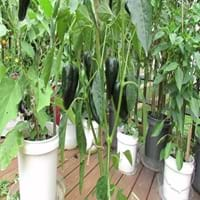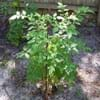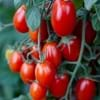Life Span
Perennial
Annual
Origin
Mexico, Central America, South America
Central America, South America
Types
Pasilla Bajo Pepper, Ancho Magnifico pepper
Willow Leaf, Sieva Lima, Dixie Speckled
Number of Varieties
Not Available
Habitat
Fertile bottom land
Humid climates, Subtropical climates, Warmer regions
USDA Hardiness Zone
4-12
6-11
AHS Heat Zone
12*1
Not Available
Sunset Zone
A1, A2, A3, H1, H2, 1a, 1b, 2a, 2b, 3a, 3b, 4, 5, 6, 7, 8, 9, 10, 11, 12, 13, 14, 15, 16, 17, 18, 19, 20, 21, 22, 23, 24
Not Available
Habit
Upright/Erect
Vining/Climbing
Minimum Width
Not Available
Flower Color
Yellow, Gold
White, Ivory
Flower Color Modifier
Bicolor
Bicolor
Fruit Color
Yellow, Orange
Green
Leaf Color in Spring
Dark Green
Green
Leaf Color in Summer
Purple, Gray Green
Green
Leaf Color in Fall
No
Green
Leaf Color in Winter
Green, Dark Green
Green
Leaf Shape
Oval
Willow-shaped
Plant Season
Not Available
Not Available
Sunlight
Full Sun
Full Sun
Type of Soil
Loam
Loam, Sand
The pH of Soil
Acidic, Neutral
Acidic, Neutral, Alkaline
Soil Drainage
Well drained
Well drained
Bloom Time
Not Available
Indeterminate
Tolerances
Drought
Drought
Where to Plant?
Container, Ground, Pot
Container, Ground, Pot
How to Plant?
Seedlings
Seedlings
Plant Maintenance
Medium
High
Watering Requirements
Average Water Needs, Do Not over Water, Requires regular watering
Allow to dry out slightly between watering, Do Not over Water, Requires regular watering
In Summer
Average Water
Not so frequently
In Spring
Moderate
Alternate Days
In Winter
Average Water
Drought Tolerant
Soil pH
Acidic, Neutral
Acidic, Neutral, Alkaline
Soil Type
Loam
Loam, Sand
Soil Drainage Capacity
Well drained
Well drained
Sun Exposure
Full Sun
Full Sun
Pruning
Remove damaged leaves, Remove dead branches, Remove dead leaves, Remove dead or diseased plant parts, Remove deadheads
Prune to control growth
Fertilizers
All-Purpose Liquid Fertilizer
organic fertlizers
Pests and Diseases
Red blotch
Aphids, Armyworm, Bean rust, Bean weevils, Corn earworm, Cucumber beetles, Curly top, Damping off, Darkling beetles, Earwigs, Fusarium root rot, Grasshoppers, Leafhoppers, Loopers, Lycaenid pod borers, Lygus bugs, Mosaic viruses, Nematodes, Powdery mildew, Saltmarsh caterpillar, Seedcorn maggot, Slugs, Snails, Spider mites, Stink bugs, Thripes, White mold, Whiteflies
Plant Tolerance
Drought
Drought
Flowers
Insignificant
Insignificant
Flower Petal Number
Single
Single
Fragrant Flower
No
Not Available
Fragrant Fruit
Yes
Not Available
Fragrant Leaf
No
Not Available
Fragrant Bark/Stem
No
Not Available
Showy Bark
No
Not Available
Foliage Texture
Medium
Medium
Foliage Sheen
Glossy
Matte
Self-Sowing
Yes
Not Available
Attracts
Insects
Not Available
Allergy
Skin irritation
Not Available
Aesthetic Uses
Not Used For Aesthetic Purpose
Not Used For Aesthetic Purpose
Beauty Benefits
Not Available
Not Available
Environmental Uses
Air purification
Not Available
Medicinal Uses
Anti-oxidant, Cold, Improve circulation, Swelling, Upset stomach, Weight loss
cholesterol-lowering, constipation, Digestive disorders, Fiber, Heart problems
Part of Plant Used
Fruits
Seeds
Other Uses
Used As Food
Used As Food
Used As Indoor Plant
Yes
No
Used As Outdoor Plant
Yes
Yes
Garden Design
Container, Edible, Herb / Vegetable, Mixed Border, Tropical
Edible, Herb, Vegetable
Botanical Name
CAPSICUM annuum 'Guajillo'
PHASEOLUS lunatus
Common Name
Chile Negro, Holy Mole Chile, Poblano Pepper
Butter Bean, Lima Bean
In Hindi
Poblano pepper plant
सेम फली
In German
Poblano Pfefferpflanze
Limabohne
In French
Poblano Pepper usine
Haricot de Lima
In Spanish
planta de pimiento poblano
Haba
In Greek
φυτό πιπέρι poblano
Γίγαντας
In Portuguese
Poblano planta da pimenta
feijão-Lima
In Polish
Poblano papryka roślin
Lima Bean
In Latin
Poblano piperis herba
Lima Bean
Phylum
Magnoliophyta
Tracheophyta
Class
Magnoliopsida
Magnoliopsida
Family
Solanaceae
Fabaceae
Clade
Angiosperms, Asterids, Eudicots
Angiosperms, Eudicots, Rosids
Tribe
Capsiceae
Phaseoleae
Subfamily
Solanoideae
Faboideae
Number of Species
Not Available
Importance of Poblano Pepper and Lima Bean
Want to have the most appropriate plant for your garden? You might want to know the importance of Poblano Pepper and Lima Bean. Basically, these two plants vary in many aspects. Compare Poblano Pepper and Lima Bean as they differ in many characteristics such as their life, care, benefits, facts, etc. Every gardener must at least have the slightest clue about the plants he wants to plant in his garden. Compare their benefits, which differ in many ways like facts and uses. The medicinal use of Poblano Pepper is Anti-oxidant, Cold, Improve circulation, Swelling, Upset stomach and Weight loss whereas of Lima Bean is cholesterol-lowering, constipation, Digestive disorders, Fiber and Heart problems. Poblano Pepper has beauty benefits as follows: Not Available while Lima Bean has beauty benefits as follows: Not Available.
Compare Facts of Poblano Pepper vs Lima Bean
How to choose the best garden plant for your garden depending upon its facts? Here garden plant comparison will help you to solve this query. Compare the facts of Poblano Pepper vs Lima Bean and know which one to choose. As garden plants have benefits and other uses, allergy is also a major drawback of plants for some people. Allergic reactions of Poblano Pepper are Skin irritation whereas of Lima Bean have Not Available respectively. Having a fruit bearing plant in your garden can be a plus point of your garden. Poblano Pepper has showy fruits and Lima Bean has no showy fruits. Also Poblano Pepper is not flowering and Lima Bean is not flowering . You can compare Poblano Pepper and Lima Bean facts and facts of other plants too.





